
How to Extract Contacts from iPhone Backup | 4 Flexible Approaches

If your iPhone is lost, or damaged, or you accidentally lose your contacts, an iPhone backup can be an important way to recover your contact information, as long as you have backed up your contacts on the iPhone device. Whether you use iTunes backup or iCloud backup, these files store your contact details. However, can you extract contacts from an iPhone backup? How do you extract contacts from iPhone backup? Many users are confused about this. This article will introduce three methods to help you easily recover iPhone contacts.
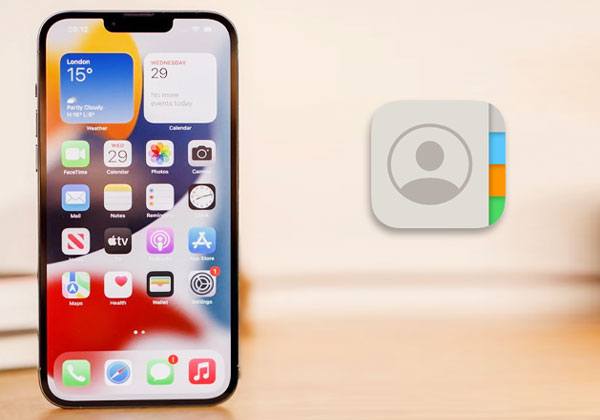
Do you know that there is a safer way to extract contacts from iTunes backup? Yeah, you heard right. There is a top-notch tool that does this safely and soundly. And it is none other than the Coolmuster iPhone Data Recovery. The best thing about this tool is that you won't need an iPhone to do the restoration process.
It can scan and extract data from iTunes without necessarily connecting your iPhone, and no data will be lost. Apart from that, it enables one to preview data before extracting it, which assists in avoiding restoring unwanted data. So, you should give it a try if you need to extract contacts from an iPhone backup.
Key features of Coolmuster iPhone Data Recovery:
Here is how to extract contacts from iTunes backup without iPhone:
01After downloading the recovery program, please install and run it on the computer. Select the "Recover from iTunes Backup File" tab found on the left tab. Then, choose a backup file on the interface, and tap the "Start Scan" icon.
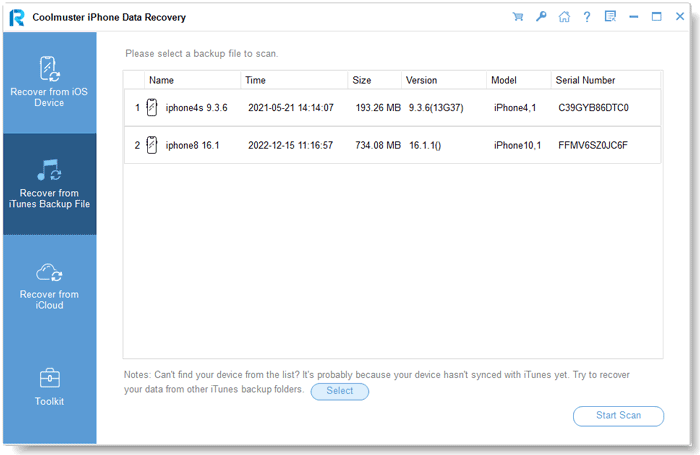
02Tick the "Contacts" option you wish to restore, then click the "Start Scan" button found at the bottom on the right. From there, you may preview the contacts on your computer. By the way, you can also tick other categories if you want.
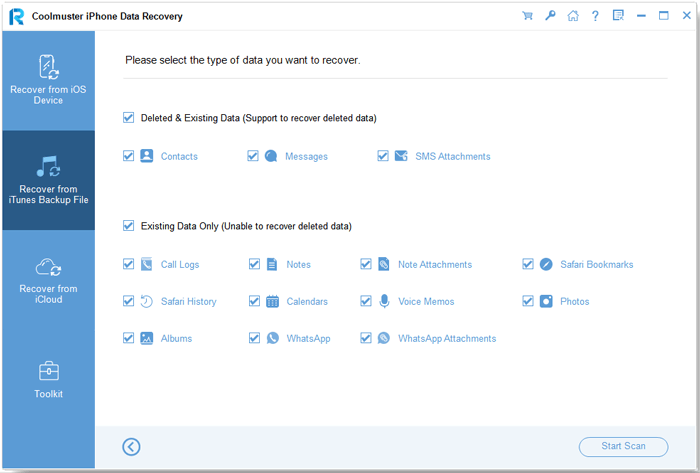
03Choose the detailed contacts that you want to extract and tap "Recover to Computer" to start extracting your contacts from your iTunes backup.
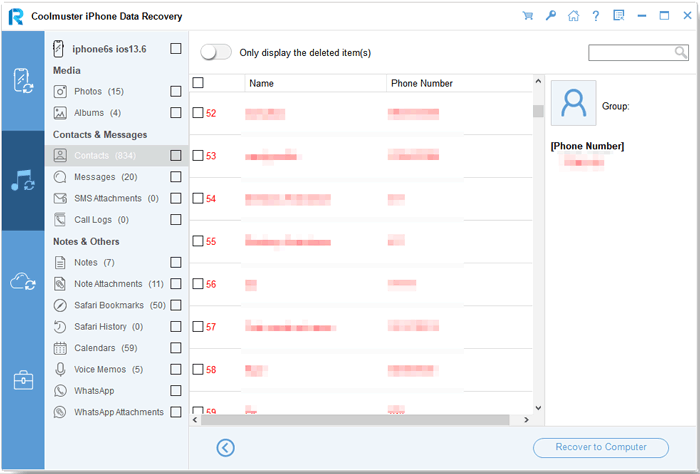
Note: As we mentioned above, you can also use this tool to restore contacts from an iCloud backup. Just choose the "Recover from iCloud" mode to do it.
Video Tutorial:
If you previously backed up your iPhone data using iTunes, you may also export contacts from iPhone backup file directly using the iTunes app. But, you should be aware that your existing data might be lost in the process. So, ensure you back up all of your data before beginning the restoration process.
Here is how to get contacts from iPhone backup file via iTunes:
Step 1. Open iTunes on your computer (Mac users can use Finder).
Step 2. Connect your iPhone to the computer using a USB cable, and click the iPhone icon.
Step 3. Go to the "Summary" page and click "Restore Backup".
Step 4. Select the iTunes backup file that contains the contact data, and click "Restore".
Step 5. Wait for the restoration to complete; the iPhone will automatically restart, and your contacts will be restored to the device.
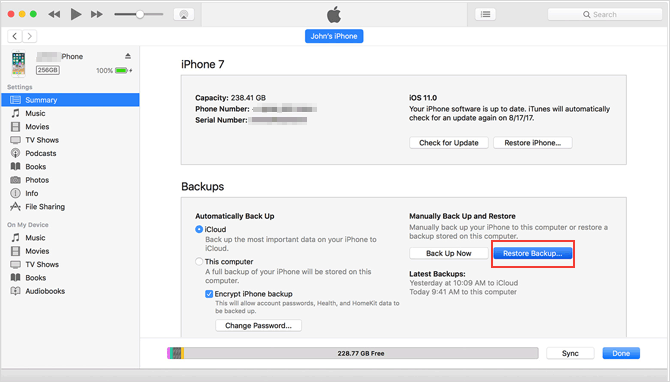
iCloud backup is also a common way for iPhone users to store contact information. If your contacts have already been synced to iCloud, you can directly download the contact data from the iCloud website. If the contacts are stored in an iCloud backup, you'll need to restore the entire iCloud backup first to retrieve your contact information.
If your iPhone has iCloud Contacts syncing enabled, all contact data will be stored on iCloud.com, and you can directly export contacts from iCloud without restoring the entire backup.
How do I retrieve my contacts from backup via iCloud.com? Follow these steps:
Step 1. Open the official iCloud website in your browser and log in with your Apple ID.
Step 2. Click on "Contacts" to enter the contact management interface.
Step 3. Select the contacts you want to export, and click the "settings" icon in the bottom left corner.
Step 4. Choose "Export vCard", and the system will download the contacts as a .vcf file, which can be used to import contacts to your iPhone or other devices.
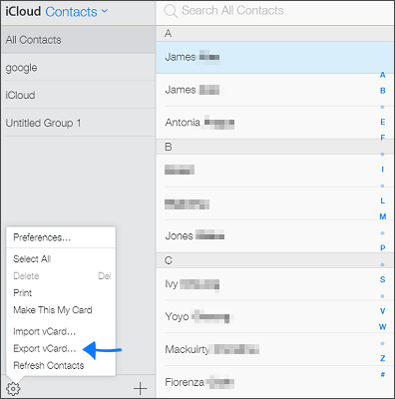
If your contacts have not been synced with iCloud but are stored in an iCloud backup, you will need to restore contacts from the iCloud backup. This method will restore the entire iCloud backup to your iPhone and may result in data being overwritten.
How do I extract all Contacts from my iPhone backup? Here are the steps:
Step 1. On your iPhone, go to "Settings" > "General" > "Transfer or Reset iPhone".
Step 2. Select "Erase All Content and Settings" to clear your iPhone.
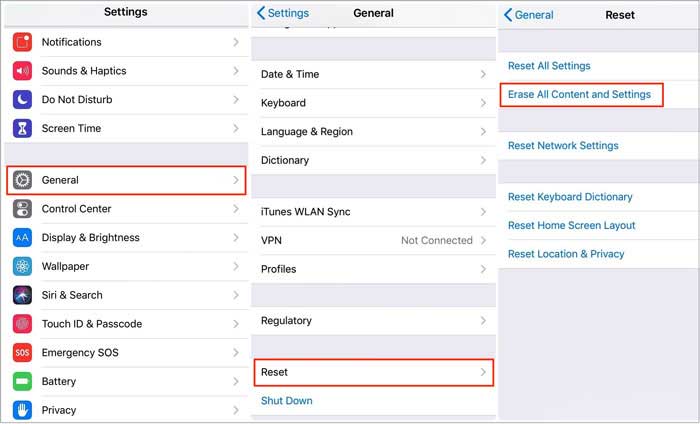
Step 3. Restart your iPhone, go to the "Apps & Data" screen, and choose "Restore from iCloud Backup".
Step 4. Log in to your iCloud account, select the iCloud backup that contains your contact data, and wait for the restoration to complete.
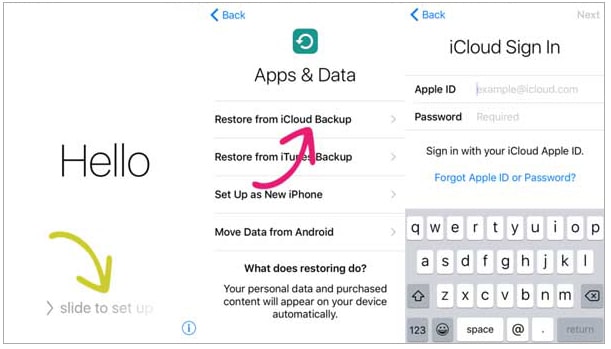
If your device isn't new, or you have completed the setup, but don't want to reset it, you can read the following article to learn how to restore from iCloud backup without reset.
How to Restore from iCloud Backup Without Reset? [2 Quick Solutions]Hopefully, you now know how to extract contacts from iPhone backup. The above steps aren't tricky; even someone who hasn't tried restoring data on their phone will find it very simple. But, if you have a good iTunes/iCloud backup, then you should go for the Coolmuster iPhone Data Recovery software, which does not necessarily require you to connect your iPhone device or erase your current data.
Related Articles:
How to Retrieve Contacts from Broken iPhone with/without Backup?
How to Save Contacts to iCloud from iPhone? (Ultimate Guide)
3 Easy Ways to Extract Photos from iPhone Backup [iTunes & iCloud]





